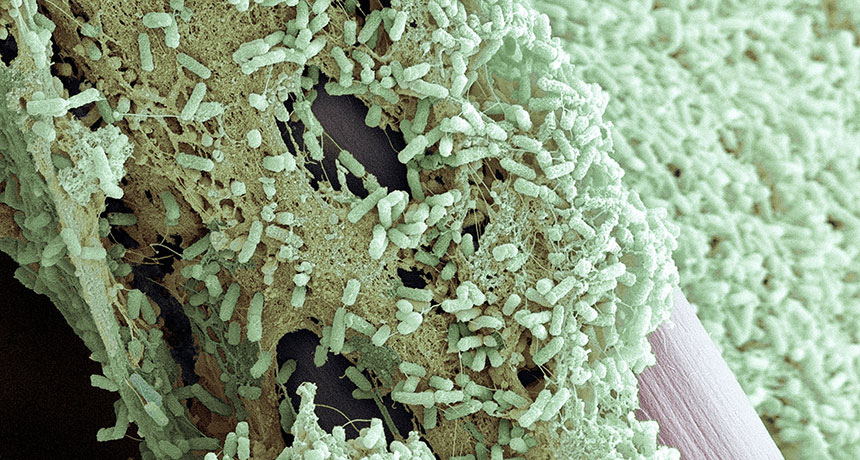Scientists find way to break through bad bacteria’s defenses
Enzymes used to build protective biofilms can also destroy them

STICKY BUSINESS Pseudomonas aeruginosa (light green cells) biofilms are communities of bacteria encased in a coating primarily of sugar polymers (dark green). Enzymes that the bacteria use to build the coating can also chew it up, a new study suggests.
Paul Gunning/Science Source






